Green Papaya holds a special place of importance in Thai cuisine. But what is green papaya? Read on to learn all about this unripe fruit and how its used in Thai cooking.
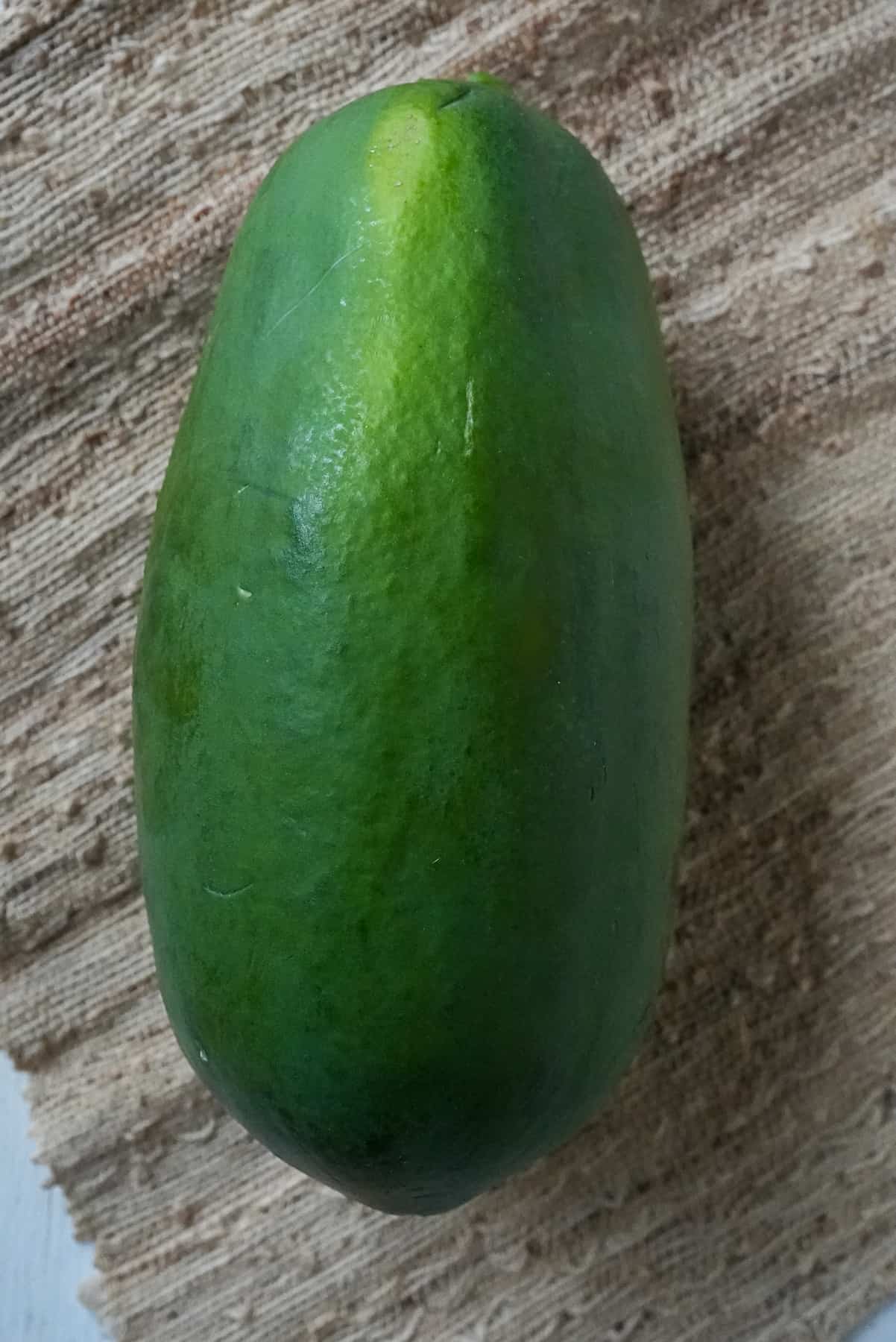
You may be familiar with green papaya from its use in the popular Thai green papaya salad known as Som Tum Thai. But what exactly is it? Where do you buy it, how do you store it, and how is it used in Thai cooking? We'll explore these questions and more in this article all about Green Papaya.
Jump to:
What is Green Papaya?

Green Papaya is the unripe fruit of the papaya tree. It has dark green skin, white flesh, and white or gray seeds. It is hard and heavy, and its meat is firm. Although this might seem worlds away from the soft orange flesh and black seeds of a ripe papaya, they are in fact the same fruit. Green Papaya is simply harvested while the fruit is still young and has not had time to ripen.
In Thai, Green papaya is known as Malagaw Dib (มะละกอดิบ). Malagaw is the Thai word for Papaya, and Dib is the Thai word for Raw. Therefore, in Thai, this unripe fruit is referred to as "raw papaya". For more Thai culinary words, see this article about How to Interpret a Thai Menu.
What does Green Papaya taste like?
Green Papaya does not have much flavor on its own, but it does have a really nice crunch. Its flavor and texture is most reminiscent of jicama, cabbage, or perhaps even water chestnuts. This neutral flavor and crunchy texture makes it a great base for soaking up lots of Thai flavors.
How is it used in Thai cooking?
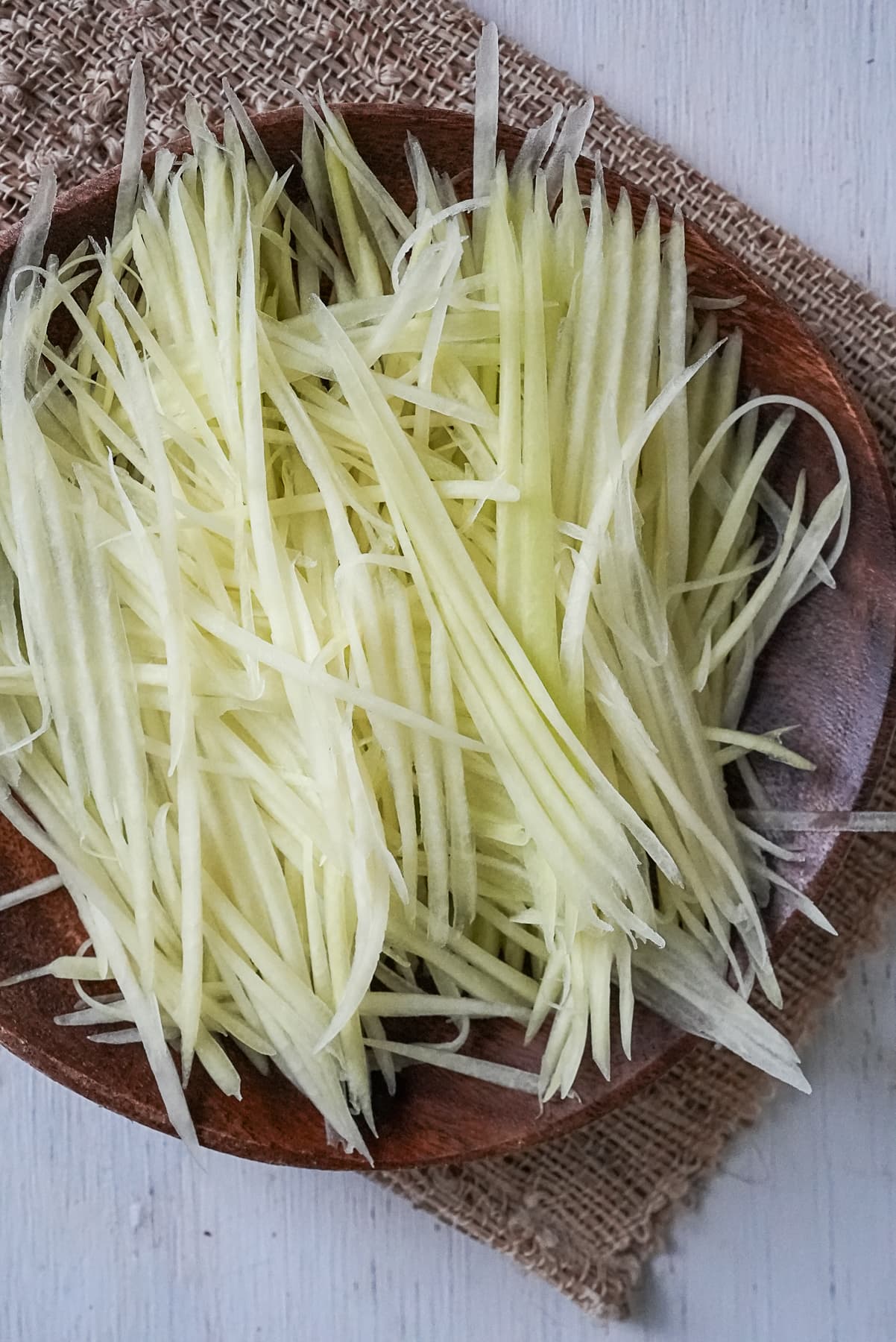
Green Papaya is most often shredded and used in the Thai salad known as Som Tam. In Thai, Som means sour and Tam refers to the method by which the salad is made, AKA pounding the ingredients together in a clay mortar and pestle. There are many different variations of Som Tam, but the original one, and the one that most people think of when they hear the name, is made with Green Papaya.
This unripe fruit is also used in a few other Thai soups and curries such as Gang Som, Gang Pa, and Gang Ohm. It can be stir fried with eggs, or pickled for a sweet and sour condiment to accompany Thai dishes.
How do you shred Green Papaya?
There are three different methods for shredding Green Papaya. For all of these methods, you'll want to start by peeling the fruit with a vegetable peeler. The skin is thin and peels easily to reveal the light colored flesh.

Once the papaya has been peeled, you can use one of the methods below to shred the flesh. The goal with each of these methods is to create strips of the fruit that are about 5 inches long and ⅛ inch thick.
1. Mandoline
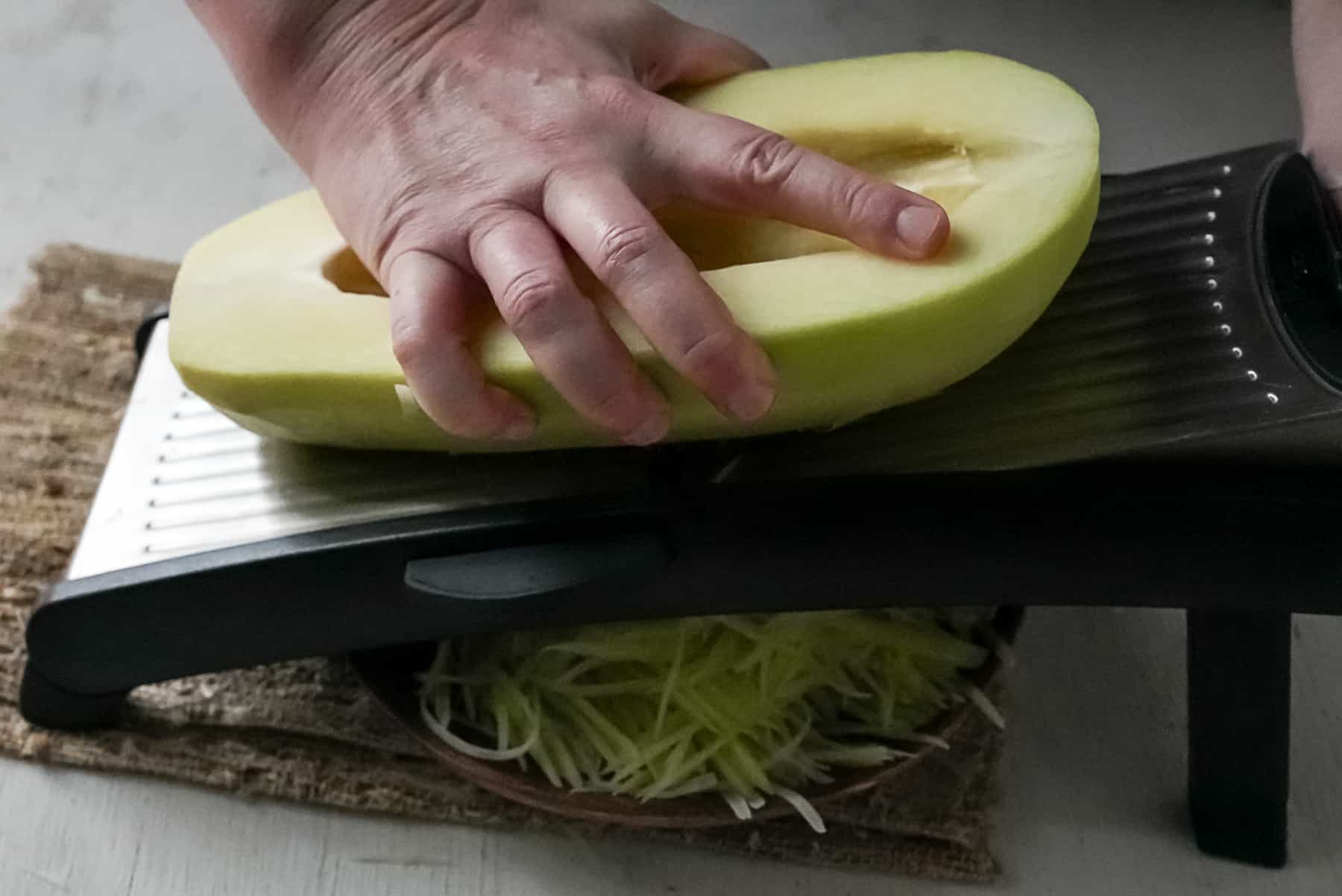
If you have a mandoline in your kitchen, it can make easy work of shredding green papaya. Set the dial to the julienne blade and adjust the settings so that your strips of papaya are approximately 1/16 to ⅛ inch thick. Be sure to use the hand guard once your papaya gets close to the blade.
2. Papaya Shredder
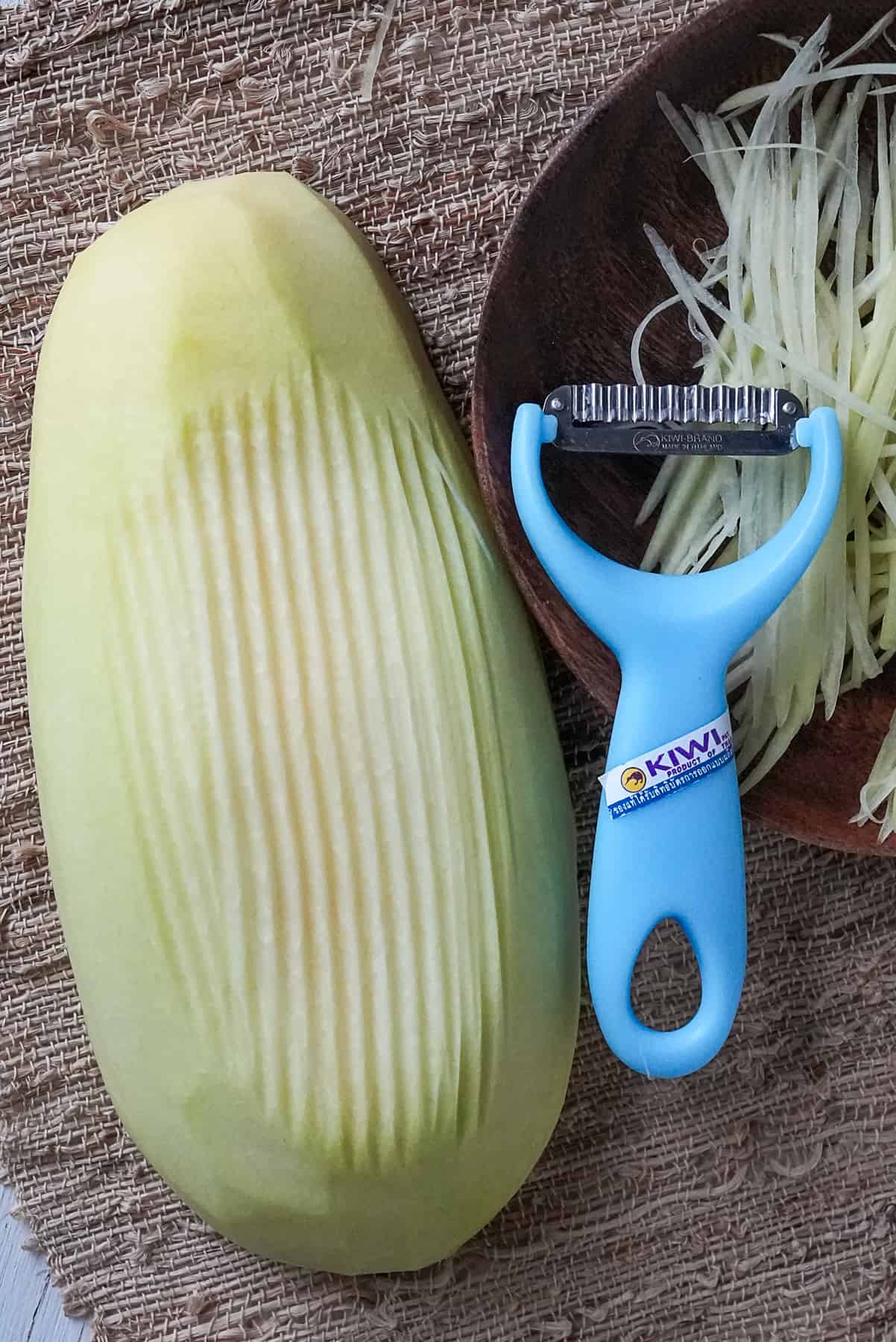
This Kiwi brand shredder was specifically made for shredding Green Papaya. Its zigzag stainless steel blade easily glides through the the papaya flesh and cuts it into perfectly-sized strips. It makes quick work of shredding the entire fruit, and is fairly inexpensive. One pro tip is that you don't need to apply too much pressure. If you do, you'll wind up with slices that are attached to one another.
3. Chef's Knife
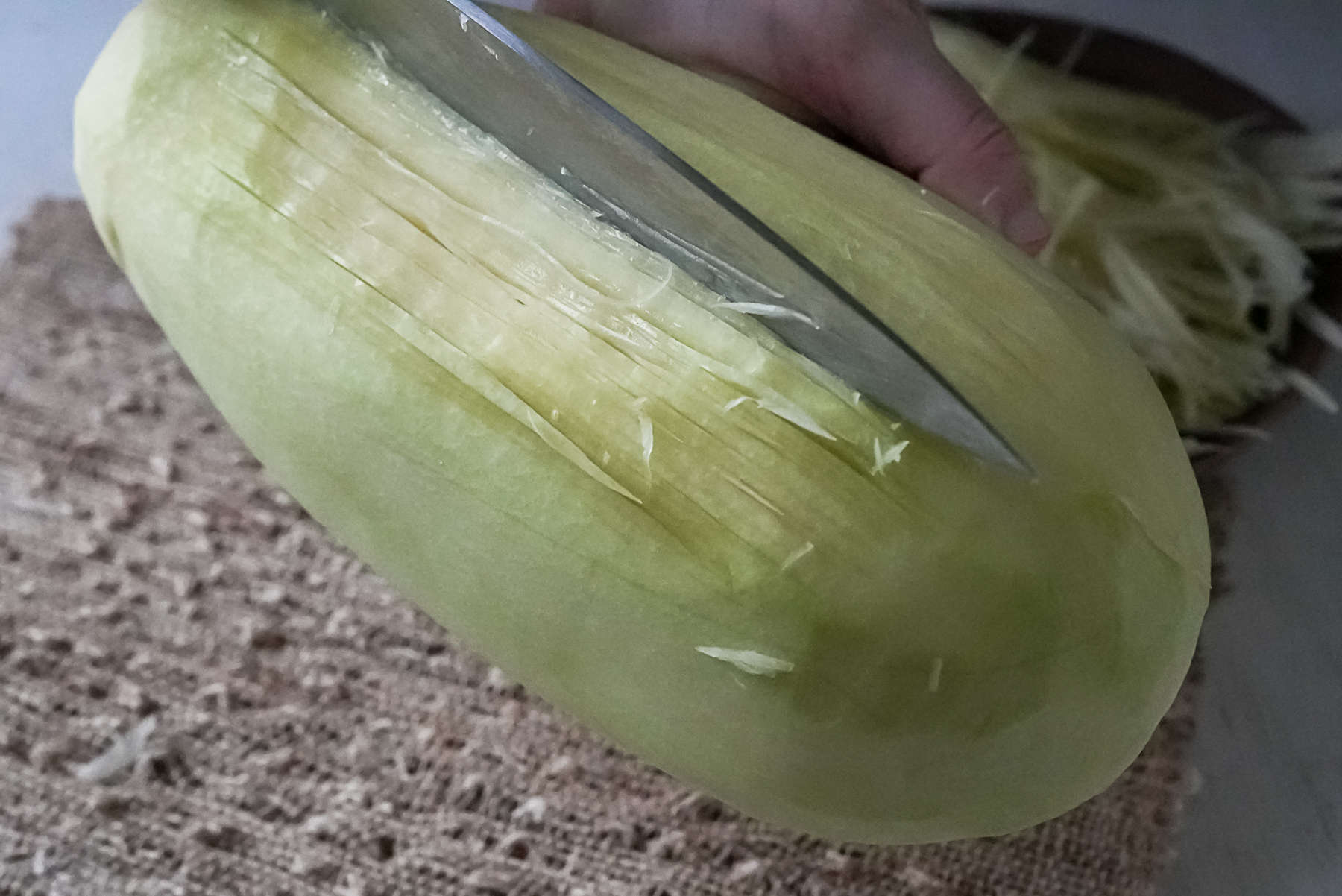
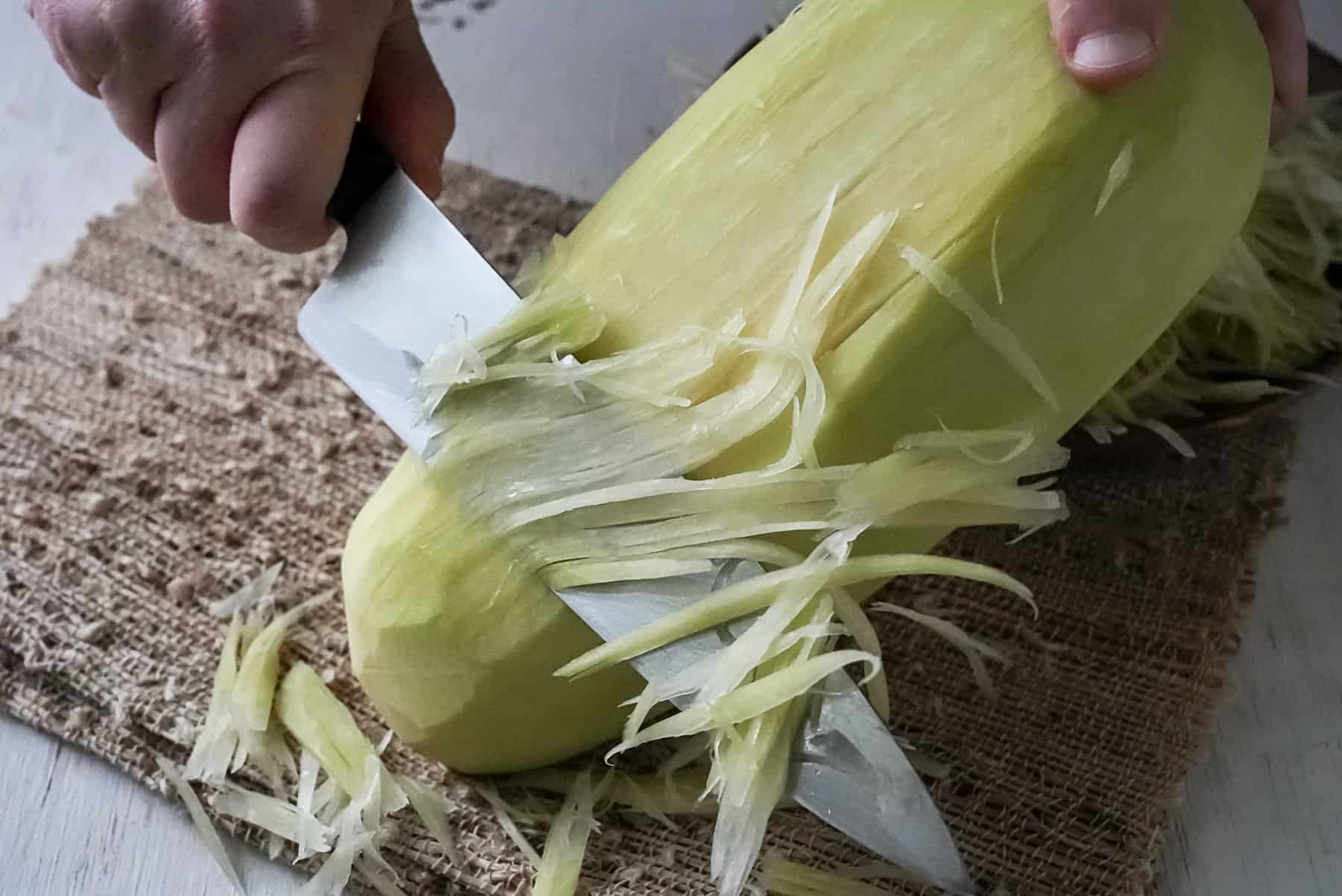
The traditional Thai method of shredding green papaya is done by using a chef's knife. You start by holding the peeled papaya lengthwise in one hand. With your other (dominant) hand, you can make quick chopping motions to create lots of parallel cuts in the papaya. Once you've covered one side with lots of these shallow cuts, you can angle the papaya flatter and use the knife to slice off the papaya shreds, one layer at a time. Then you repeat this process until you reach the seed cavity.
Where to Buy Green Papaya
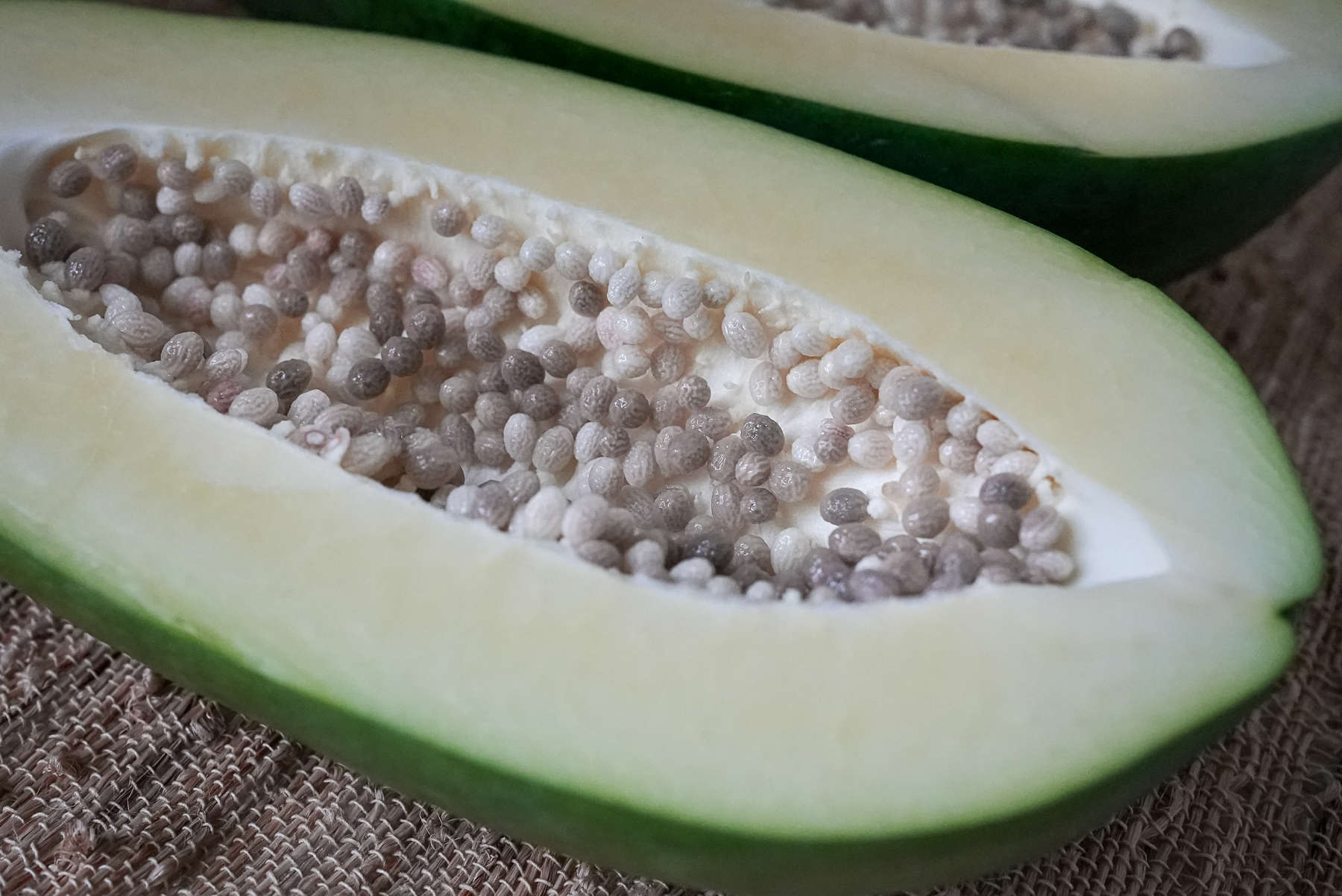
Green Papaya can often be found at Asian markets, especially those that cater to the Southeast Asian population. In my area, I can also find unripe papaya at my local pan-Asian markets as well.
When choosing your papaya, be sure to pick one that is uniformly dark green. If it is lighter green or has lighter green or yellow spots, it may have already started to ripen. The papaya should be very firm without any soft spots. Once sliced open, the papaya should have a white or very light colored flesh with white or light gray seeds.
Substitutes
If you're not able to find Green Papaya, there are a few other vegetables and unripe fruits that can work as acceptable substitutes.
Green mango (unripe mango) has the same crunchy texture, although it is much more sour than green papaya. If you plan to use green mango in Som Tam, you'll want to adjust the amount of lime juice you use accordingly. Jicama, rutabaga or swede, carrot, and cabbage all have a nice crunchy texture, although they all have slightly different flavors than green papaya. Cucumber which has been deseeded may also work as a substitute in some cases.
Storage
A whole green papaya will last for about a week in the refrigerator. To prevent it from ripening, you should peel and shred it. Shredded green papaya stored in the refrigerator will last for at least a week, and usually longer.
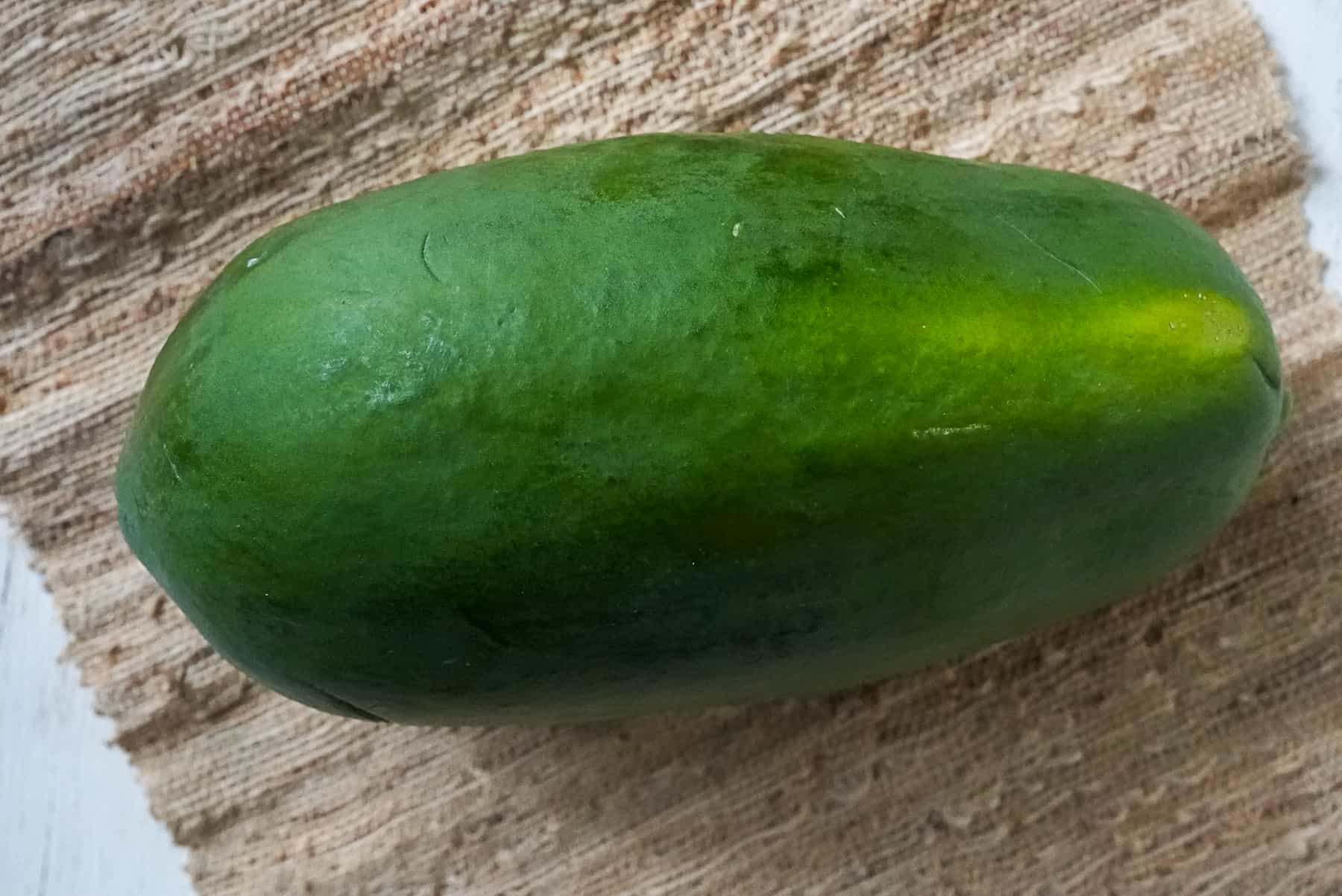
FAQs
Yes, green papaya is the unripe fruit of the papaya tree. It has dark green skin, white flesh, and pale seeds. It is firm, dense, and significantly different in texture from the soft, orange flesh and black seeds of a fully ripened papaya. However, both are the same fruit—the key difference is that green papaya is picked before it has had the chance to mature and ripen.
Green papaya has a mild flavor on its own but offers a satisfying crunch. Its texture and taste are similar to jicama, cabbage, or even water chestnuts.
If green papaya is unavailable, several other vegetables and unripe fruits can serve as suitable substitutes. Green mango has a similar crunchy texture but is much more tart. Jicama, rutabaga (swede), carrot, and cabbage also provide a satisfying crunch, though each has a slightly different flavor. In some cases, deseeded cucumber can also work as a substitute.
Craving more? Subscribe to Rachel Cooks Thai to get new Thai recipes delivered straight to your inbox! And stay in touch on Facebook, Pinterest and Instagram for all of the latest updates.






Leave a Reply